


 |
 |

|
| Trip Planning | Crete Flag | History of Crete | Palaces of Knossos | Itinerary | Photos |
|
Trip Planning |
Virginia and Chuck on the Queen Mary II on their Transatlantic cruise from South Hampton to New York City.
Board the Viking Sea on August 20th, 2021 - Tour Malta.
Then cruise to Kalamata for a day tour, and then on to Athens for a two day tour, both on the main land of Greece.
Then on to the islands of Santorini and on to Rhodes and finally Crete.
Then back to Malta.
We had been to Sicily and Sardinia on a previous cruise in 2018 for my 78th birthday!

|
Crete's Flag |
Flag of Cretan State (1898-1913, an autonomous state of the Ottoman Empire)
The design depicted the blue and white cross design of Greece and a red canton (upper left) with a white five-pointed star symbolizing the Ottoman suzerainty.
This reproduction has its cross design taken from the national flag of Greece (land variant in use 1822-1969 and 1974-78), its fat star design and red colour from the late Ottoman flag (1844-1923), using dimensions (format 2:3) and is using lighter shade of blue, as used historically.
|
Brief History of Crete and a Map |
Crete is the largest and most populous of the Greek islands, the 88th largest island in the world and the fifth largest island in the Mediterranean Sea, after Sicily, Sardinia, Cyprus, and Corsica. It bounds the southern border of the Aegean Sea. Crete rests approximately 160 km (99 mi) south of the Greek mainland. It has an area of 8,336 km2 (3,219 sq mi) and a coastline of 1,046 km (650 mi).
Read More about the history of Crete.......
The Palace of Minos at Knossos
Knossos Palace
The Palace of Minos at Knossos is one of the most famous archaeological sites in the world. Located on Kephala Hill on the island of Crete in the Mediterranean Sea off the coast of Greece, Knossos palace was the political, social and cultural center of the Minoan culture during the Early and Middle Bronze Age. Founded at least as early as 2400 BC, its power was greatly diminished, but not completely dissipated, by the eruption of Santorini about 1625 BC.
What's perhaps more important, perhaps, is that the ruins of Knossos Palace are the cultural heart of the Greek myths Theseus fighting the Minotaur, Ariadne and her ball of string, Daedalus the architect and doomed Icarus of the waxwings; all reported by Greek and Roman sources but almost certainly much older. The earliest representation of Theseus fighting the minotaur is illustrated on an amphora from the Greek island of Tinos dated 670-660 BC.
Palaces of the Aegean Culture
The Aegean culture known as Minoan is the Bronze Age civilization that flourished on the island of Crete during the second and third millennia BC. The city of Knossos was one of its main cities - and it contained its largest palace after the shattering earthquake that marks the beginning of the New Palace period in Greek archaeology, ca. 1700 BC.
Palaces of the Minoan culture were likely not simply residences of a ruler, or even a ruler and his family, but rather held a public function, where others could enter and use (some of) the palace facilities where staged performances took place. The palace at Knossos, according to legend the palace of King Minos, was the largest of the Minoan palaces, and the longest-lived building of its type, remaining throughout the Middle and Late Bronze Ages as the focal point of the settlement.
Architectural Elements
The palace at Knossos was renowned for its unique light emanating from its surfaces, the results of the liberal use of gypsum (selenite) from a local quarry as a building material and ornamental element. Evans' reconstruction used a grey cement, which made a huge difference to the way its seen. Restoration efforts are underway to remove the cement and restore the gypsum surface, but they have moved slowly, because removing the greyish cement mechanically is detrimental to the underlying gypsum. Laser removal has been attempted and may prove a reasonable answer.
The main source of water at Knossos initially was at the spring of Mavrokolymbos, about 10 kilometers away from the palace and conveyed by way of a system of terracotta pipes. Six wells in the near vicinity of the palace served potable water beginning ca. 1900-1700 BC. A sewer system, which connected toilets flushed with rainwater to large (79x38 cm) drains, had secondary pipelines, lightwells and drains and in total exceeds 150 meters in length. It has also been suggested as the inspiration for the labyrinth myth.
|
Itinerary - Day 9 |
The Palace of Knossos
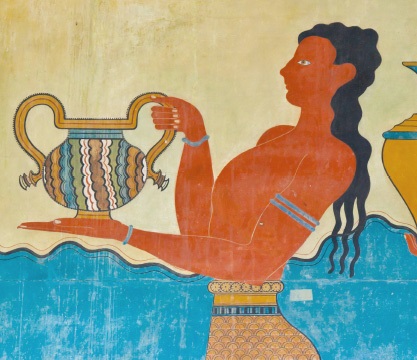
Head into the countryside of Crete today. Visit the fabled palace of King Minos, center of the mysterious Minoan civilization that flourished between 2600 BC and 1100 BC, whose remains were found in 1878 by Cretan antiquarian Minos Kalokairinos.
Between 1900 and 1905, British archaeologist Sir Arthur Evans led major excavation works, revealing more about this ancient culture. After a drive amid the island's scenic views, explore what remains of the once-sprawling Palace of Knossos, the legendary royal residence in which Minos's wife Pasiphae gave birth to the Minotaur, half bull and half man, and where Theseus of Greek mythology destroyed the beast.
With your guide, view the Royal Quarters, the Throne Room with its antechamber and the Queen's Quarters, above whose entrance you will see the famed dolphin frescoes.
Then, board your motor coach and head to a local tavern, where you will be treated to a traditional three-course Cretan lunch.
|
Photos |
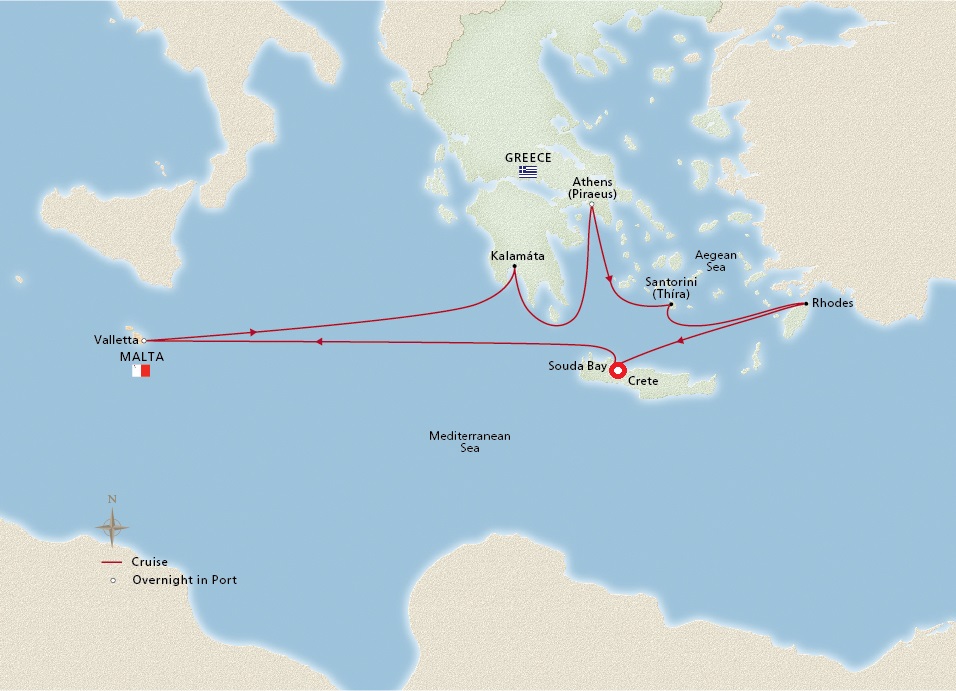
Ports of Call on the Cruise |
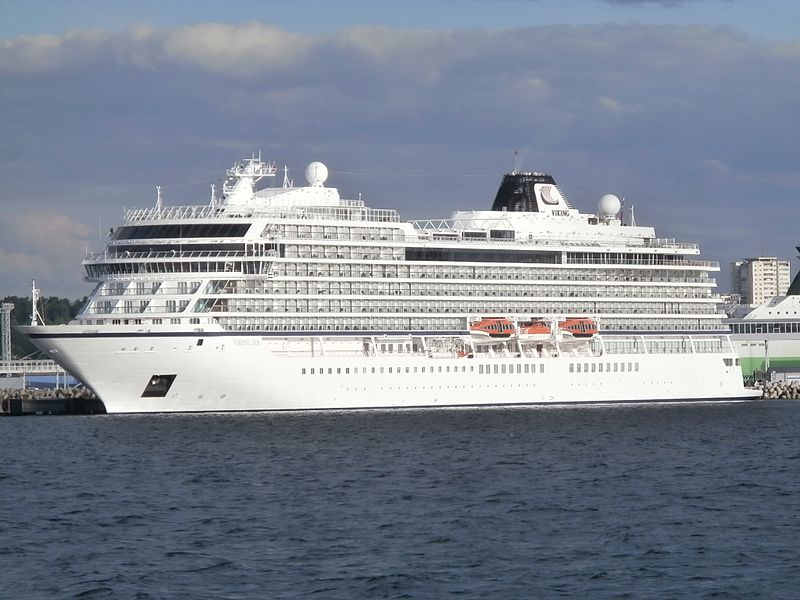
Cruise Ship - Viking Sea |

Sea side on Crete. |
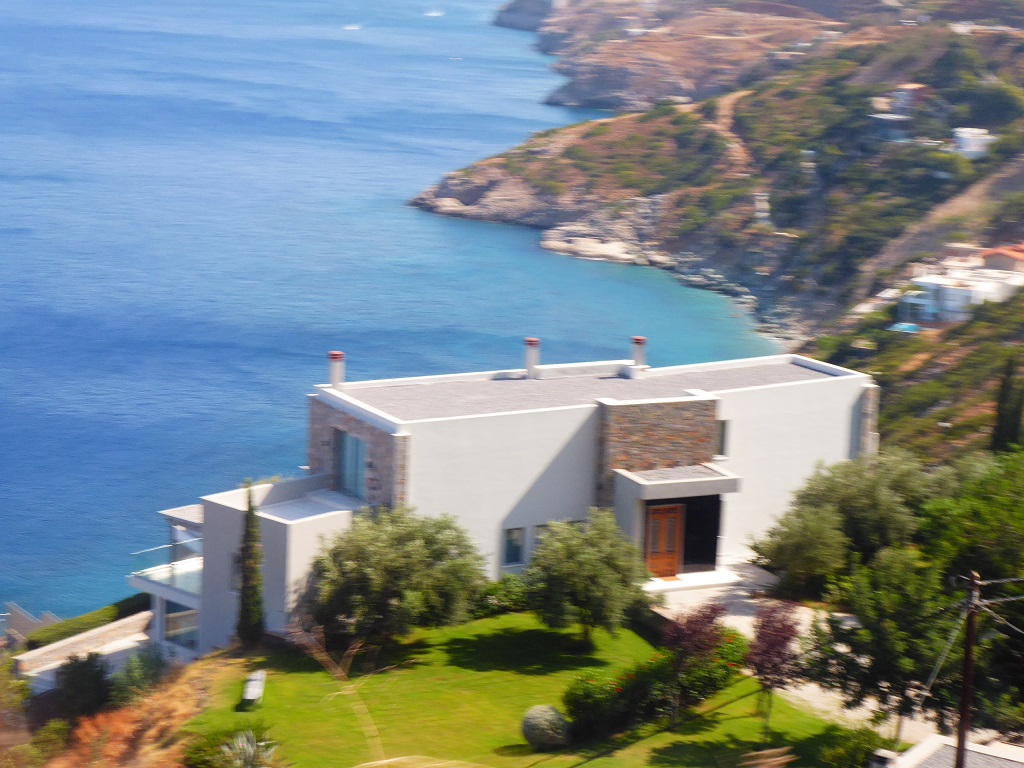
Great views along the coast! |

White Mountains. |
We found out that there was a small creek running past the Palace of Minos at Knossos thousands of years ago. It now, is dry. The island of Crete has a small river and lake, the only ones on the Greek Islands. We learned that it actually snows on the peaks in winter givien Crete some small amounts of natural water!
Lefka Ori, meaning 'White Mountains') or Madares (from the Cretan Greek meaning 'without coverage, bald, bare of any vegetation for high mountain areas') is a mountain range located in Western Crete, in the Chania prefecture. The White Mountains or Lefka Ori occupy a large part of the centre of West Crete and are the main feature of the region. They consist mainly of limestone, from light grey to bluish or black color. The White Mountains have taken their name from the perpetual white or off-white color of their peaks as the off white of limestone during the summer and fall interchanges with the snow that covers the peaks until late in spring.
The highest summit is Pachnes at 2,453 m (8,048 ft) and there are over 30 summits that are over 2,000 m (6,562 ft) high. The Lefka Ori also have about 50 gorges, the most famous being the Samaria Gorge. Another characteristic of the mountain range is that there are a number of plateaus that exist at heights of 500-1,100 metres (1,640-3,609 ft), such at those of Askifou, Impros, Kallikratis, Anopolis, and Omalos, which are all surrounded by mountains.
|
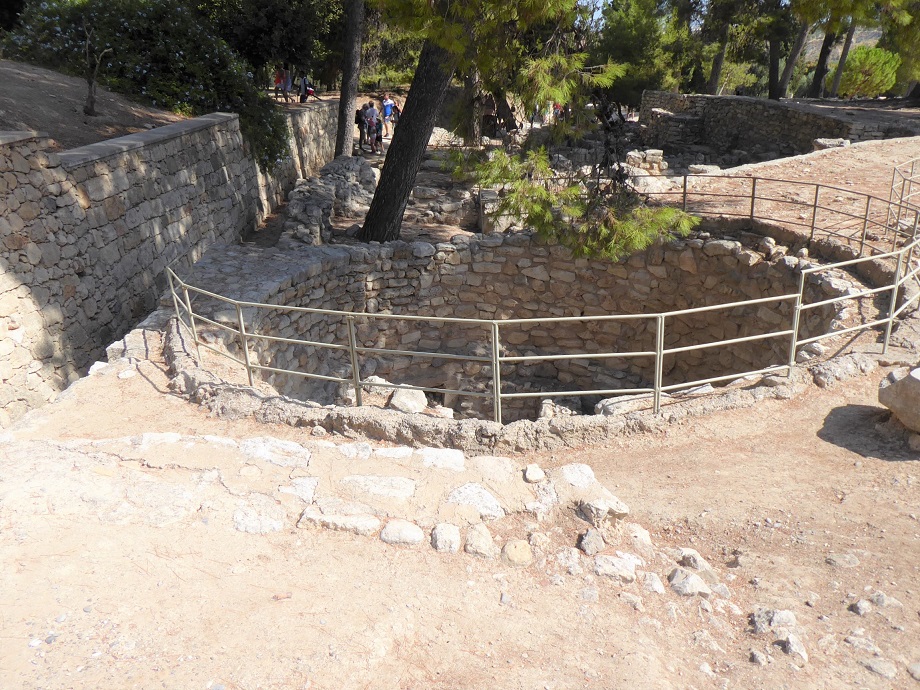
Pitts where religious tokens were thrown. |

Reconstructing some of the Walls. |
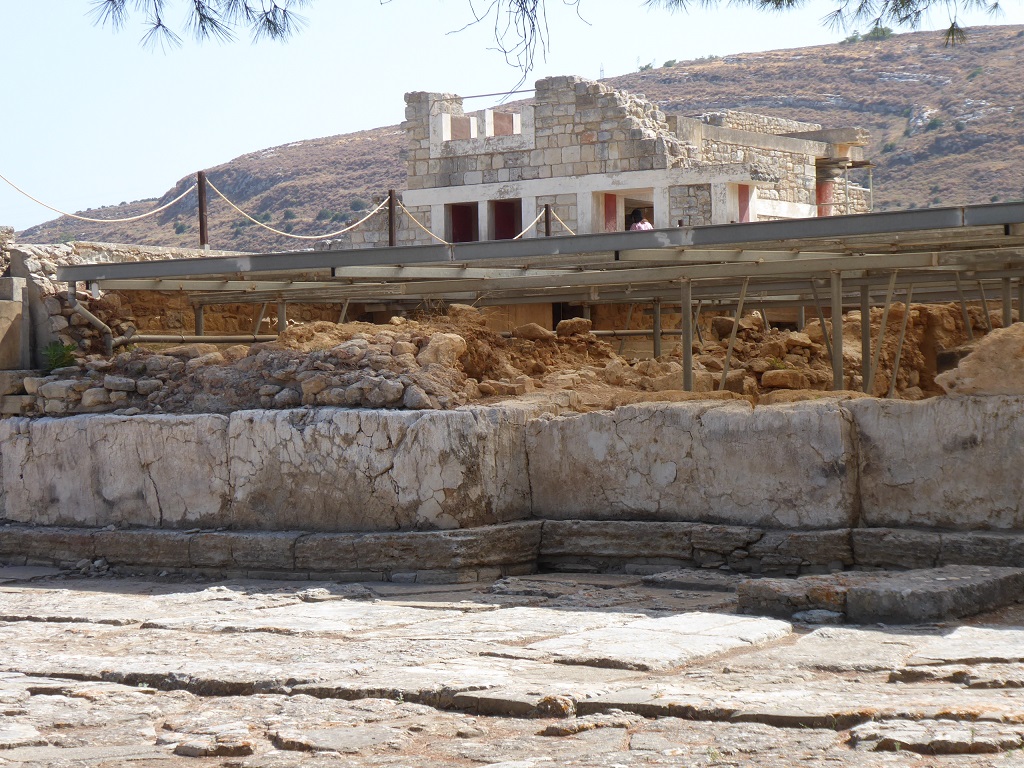
|

|
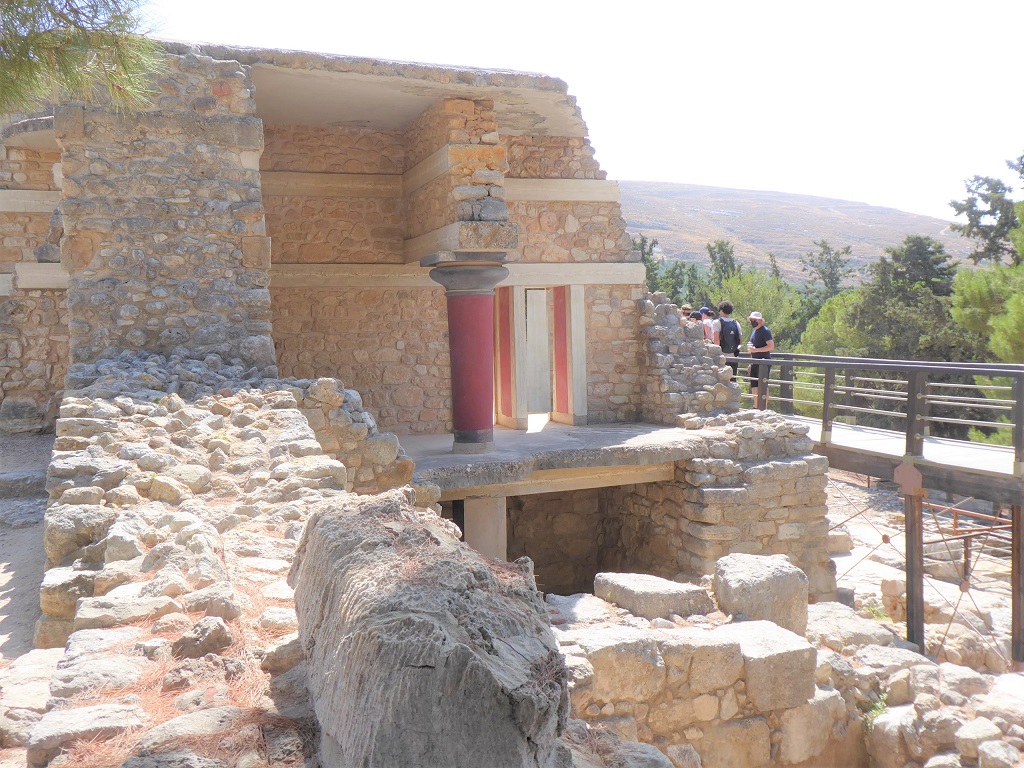
Famous facades. |
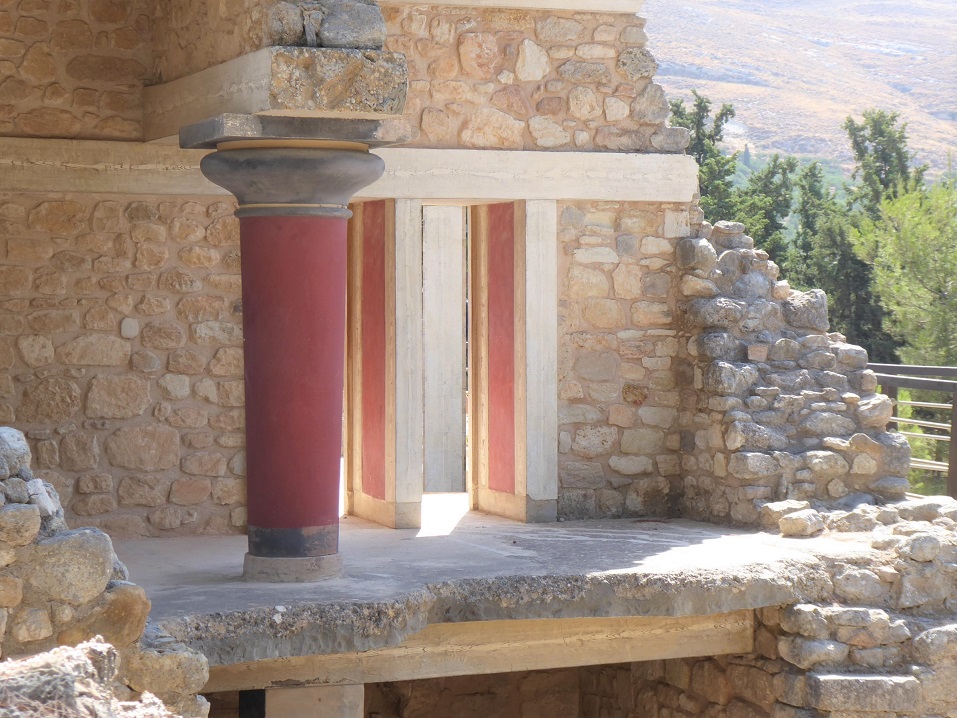
Special columns in the Palace. |

Side view. |
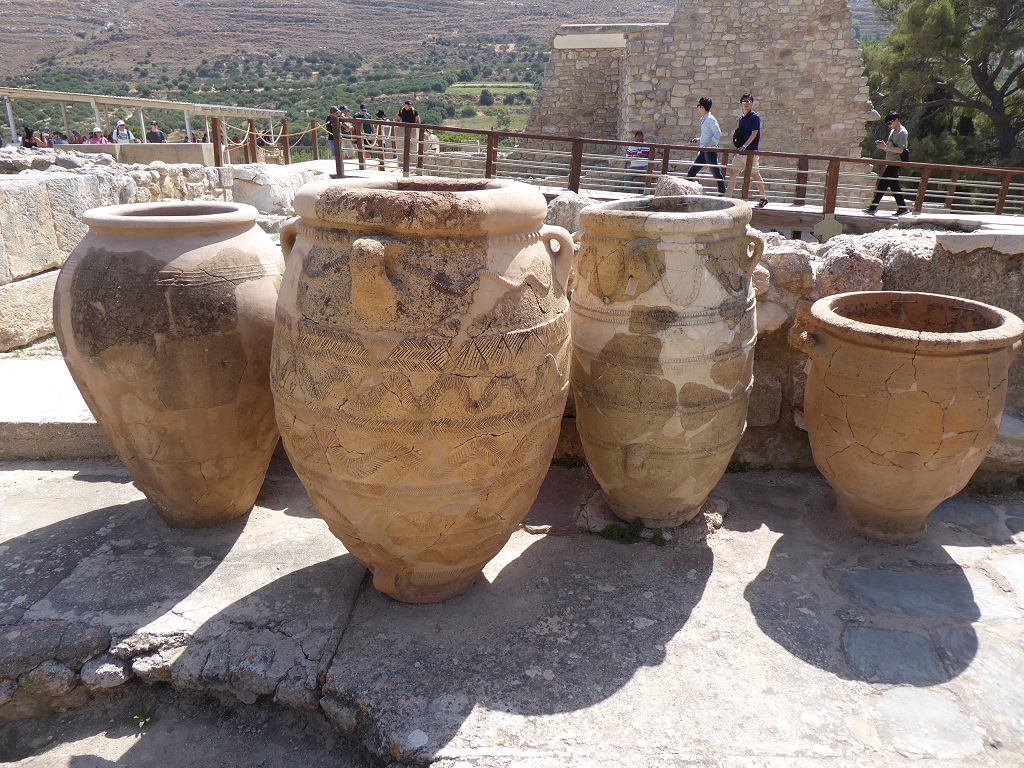
Various pottery vessels. |

Entrance to the Throne Room! |
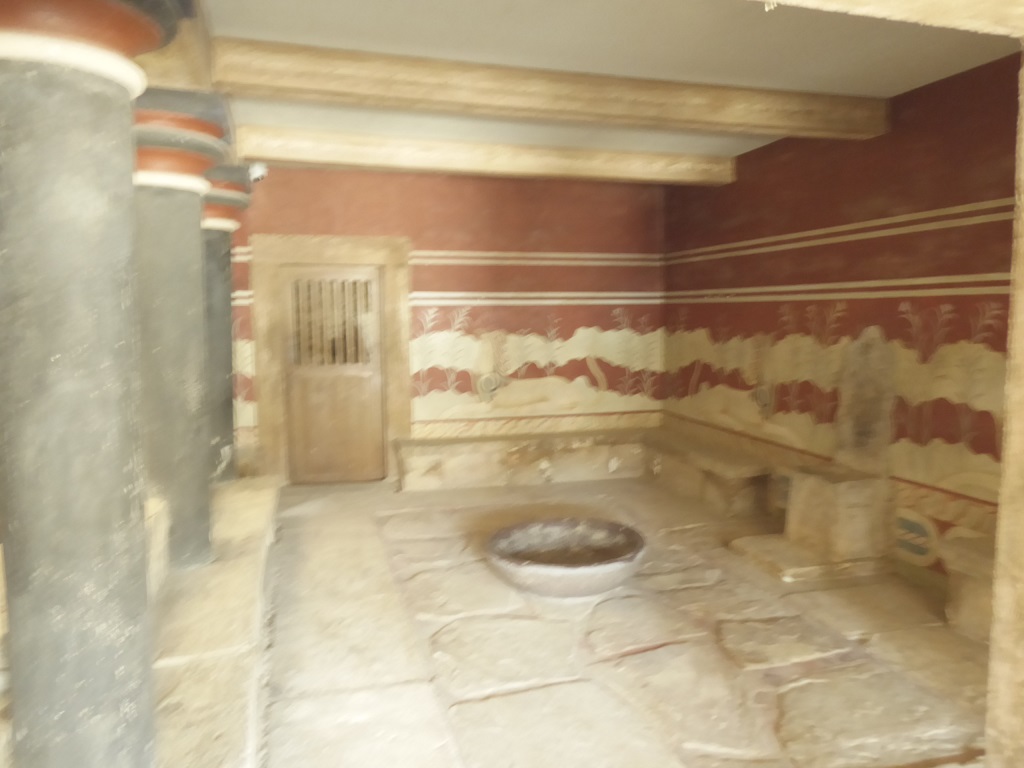
Throne Room - Very small. |
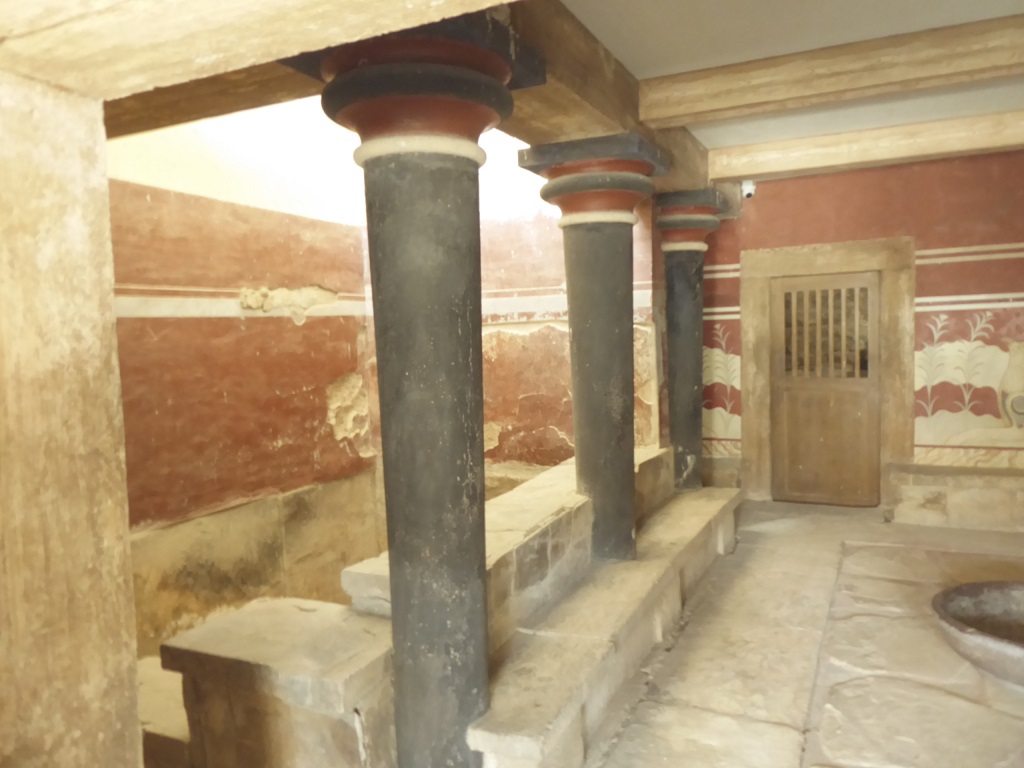
Throne room. |
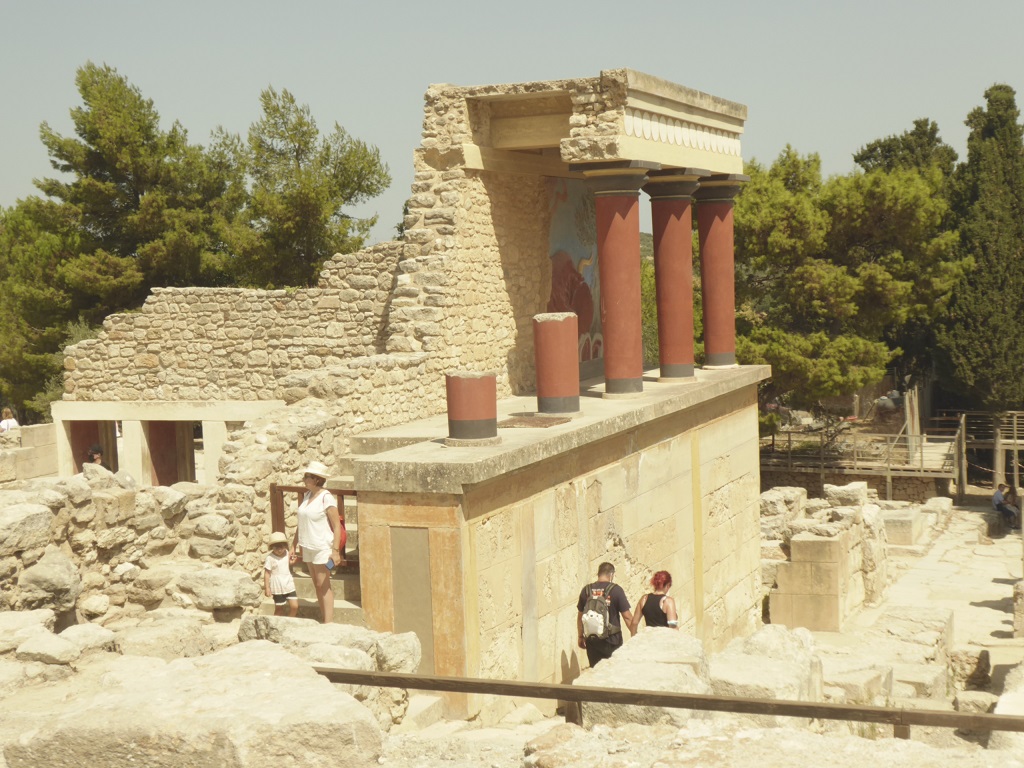
Facade with painting on the wall. |

Famouse Bull painting. |

More facades. |
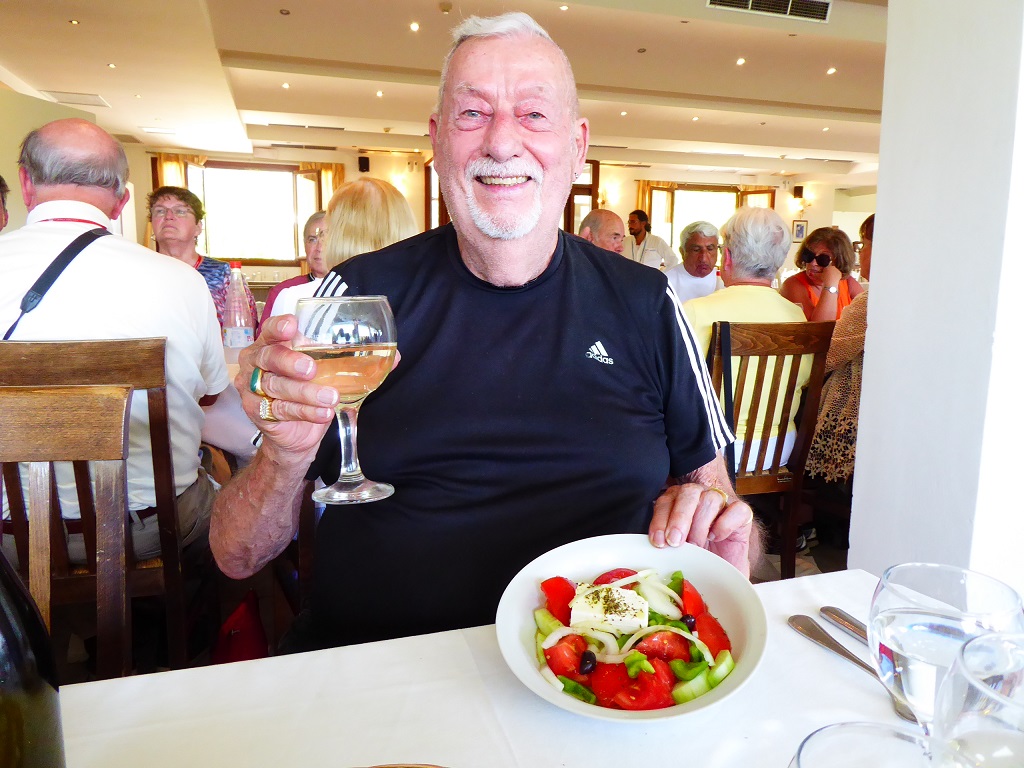
200 of us had a sit down Greek lunch after the tour! |

Salad, Chicken, Potato, Watermelon and Wine! |
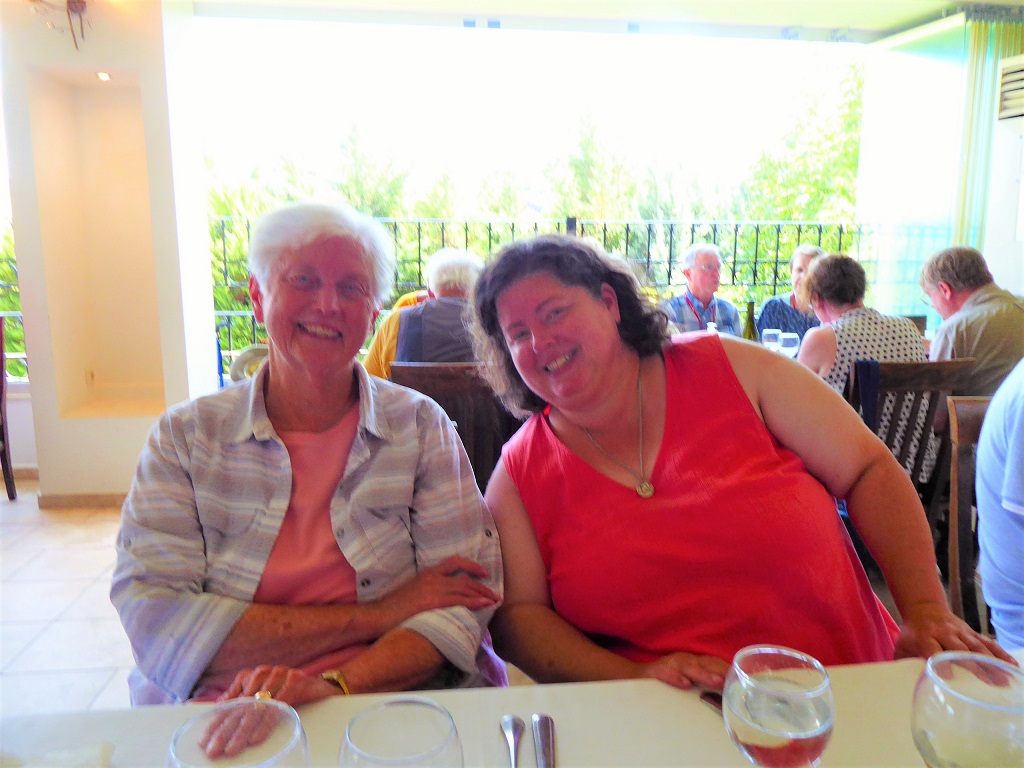
New friends, the woman on the right plays a cello! |

She had a good laugh as she took my photo, a good time by all! |
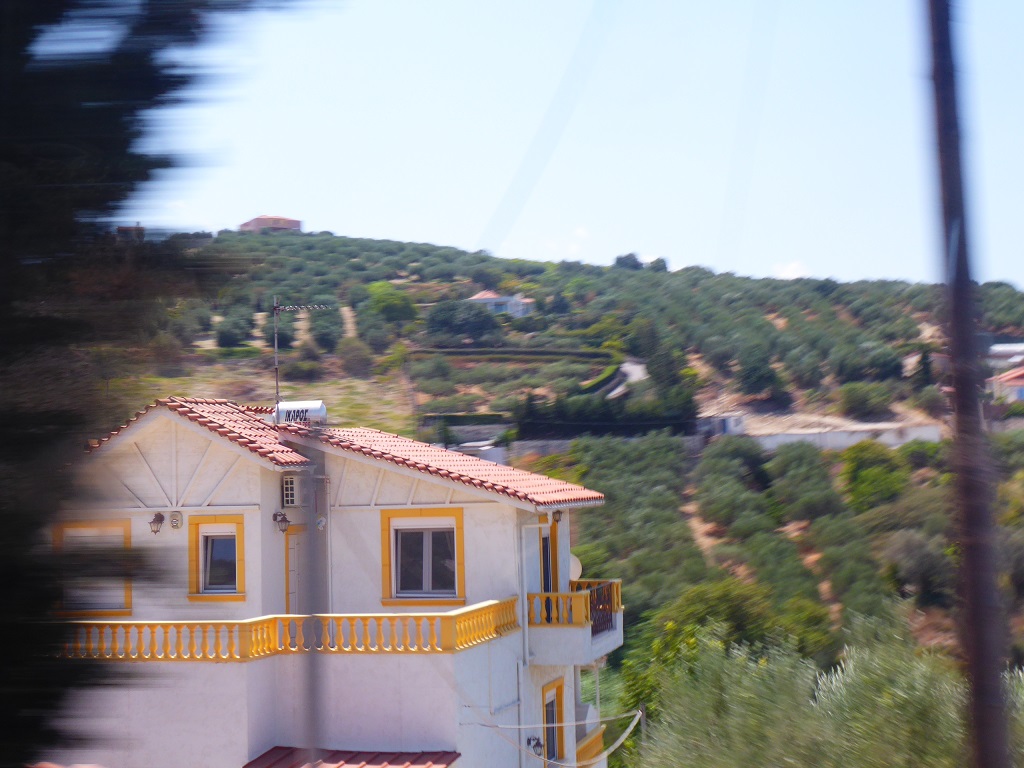
Houses along the way back to the Viking Sea. |
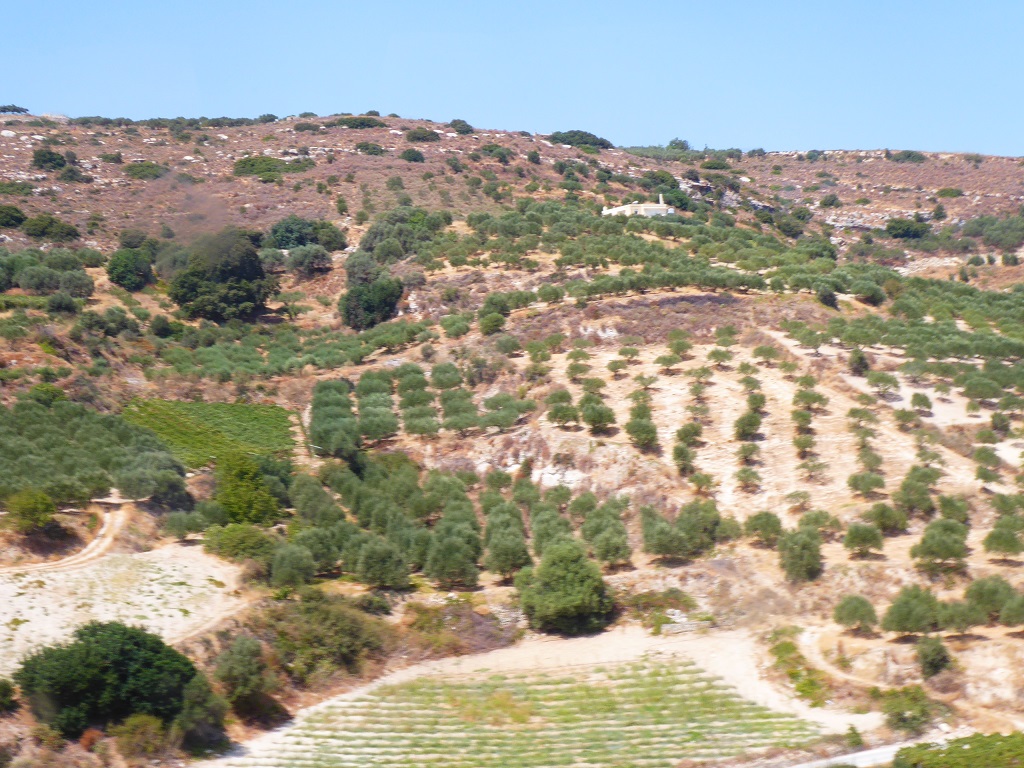
Some of the 180 million olive trees in Greece. |
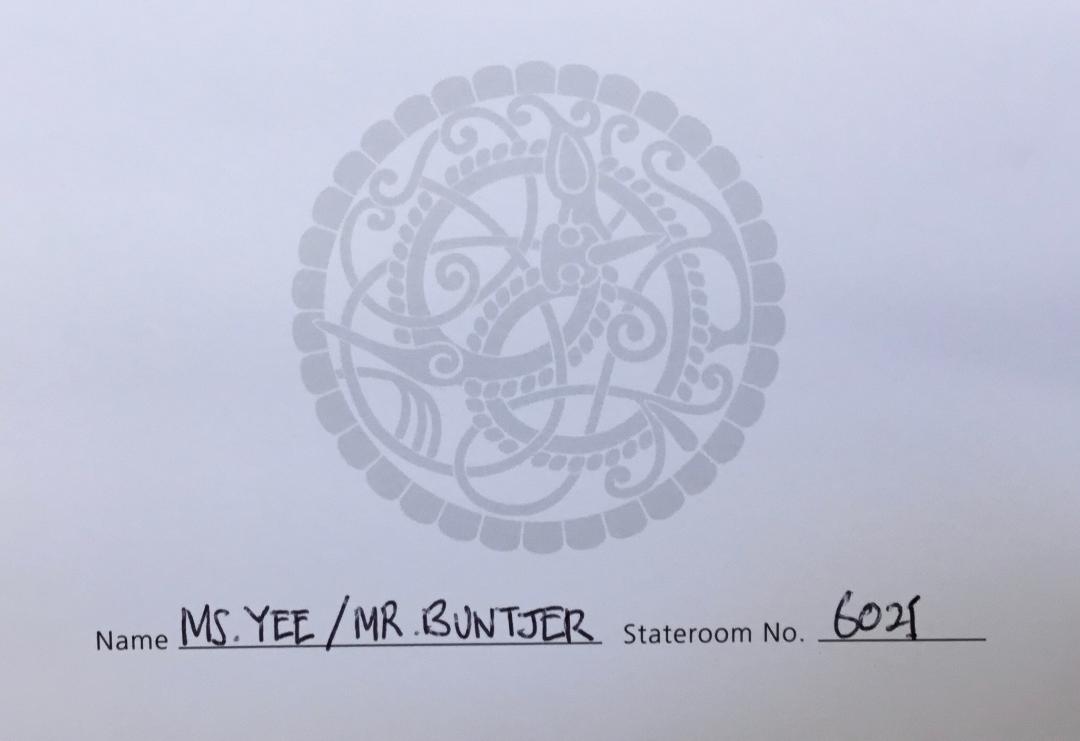
|
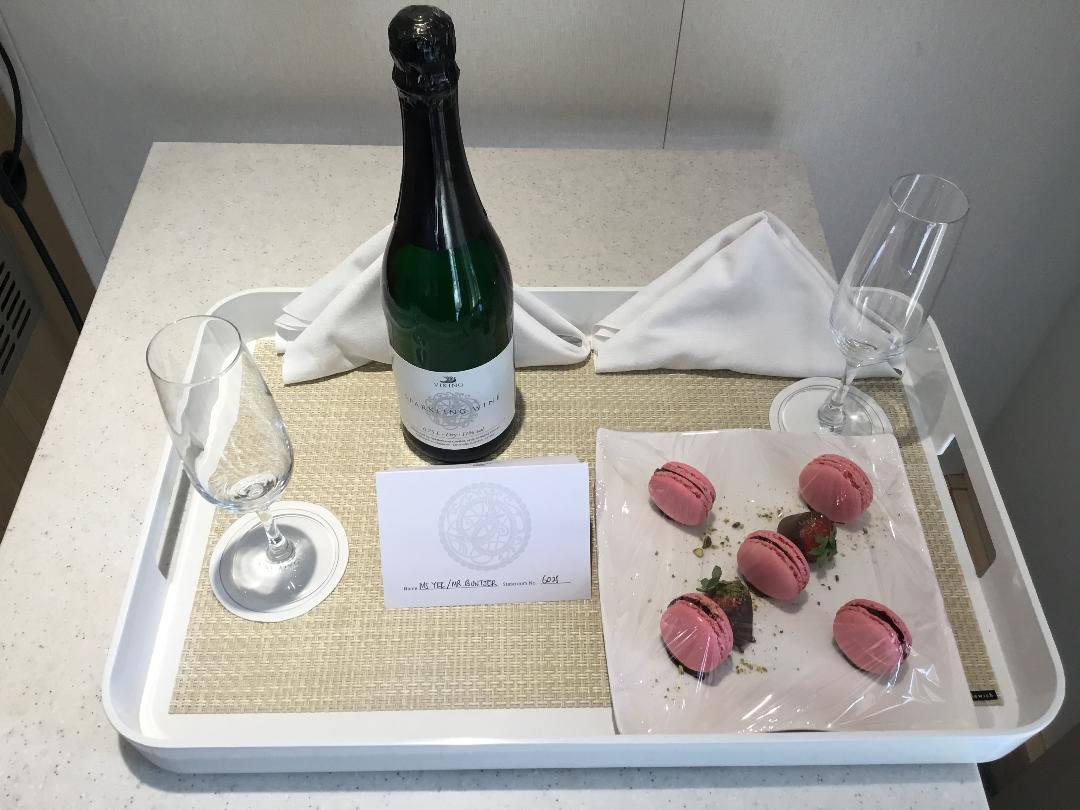
|
Compliments from the Viking Sea for our enjoyment during the cruise!
Sailing to Malta. Last Sunset on the Sea!
Afternoon cocktails at the Explorer Bar!
Cocktails with Marc, our Fantastic Guest Service Manager!
Virginia - Last Dinner of the Cruise! Chuck - Last Dinner of the Cruise!


After we sailed from Crete we decided to spend some of our free monies from the ship on an hour long massage! Then we ordered a lunch and orange juice. We had a bottle of champagne given to us by the management so we made drinks!
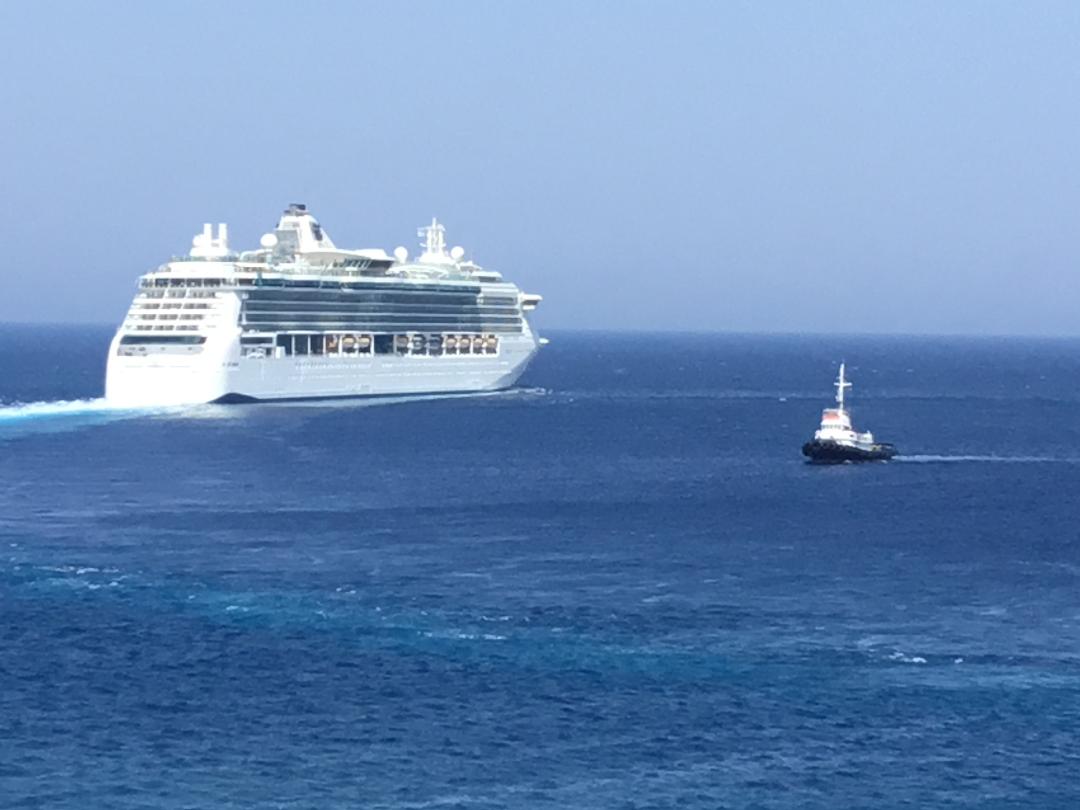
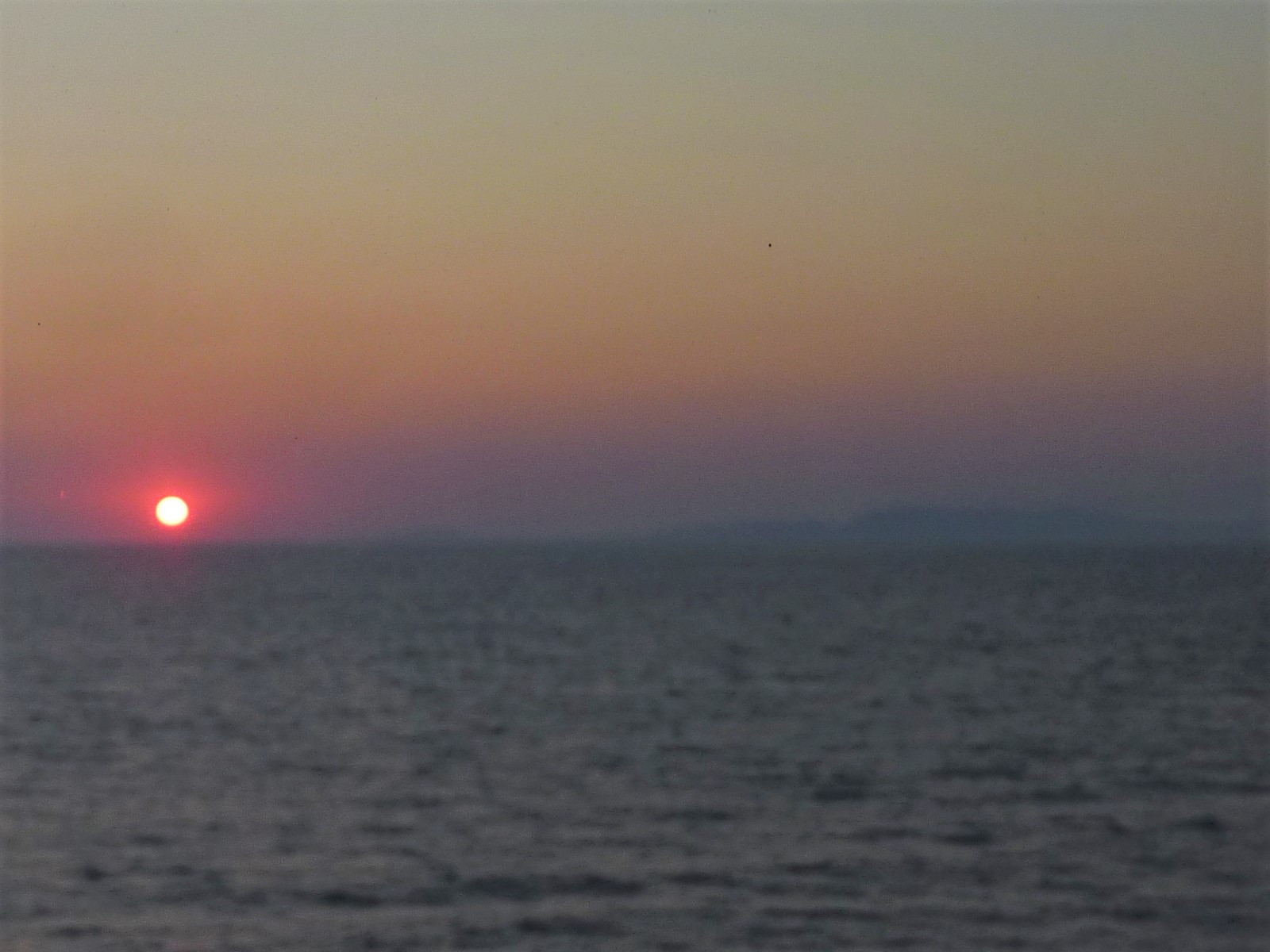

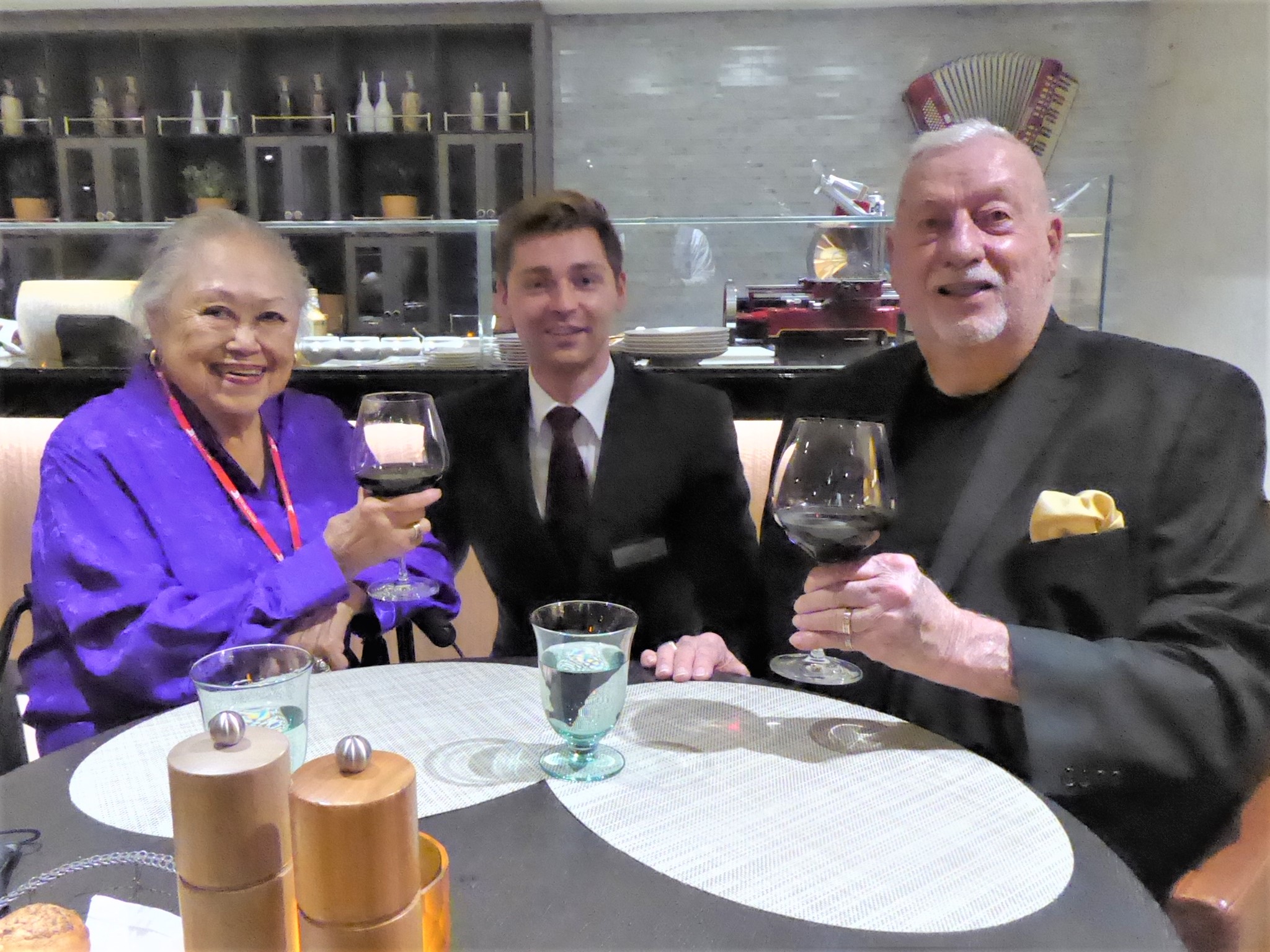


Created on: 2021.05.17

Updated on: 2021.09.05